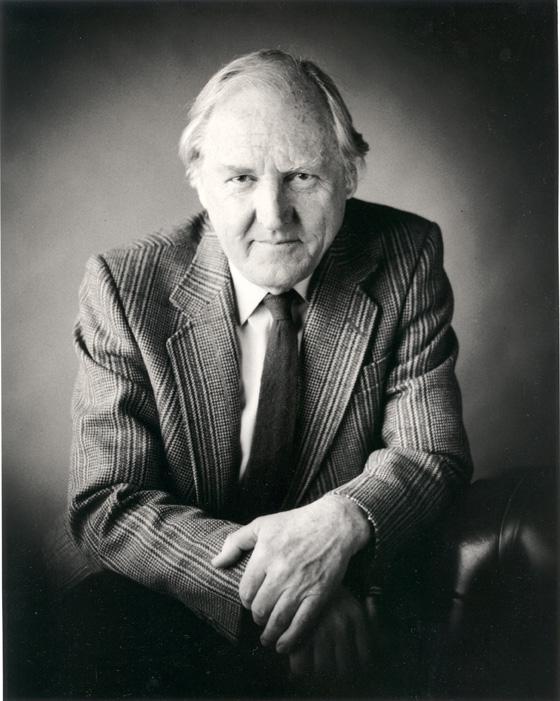Professor Mervyn Paterson

Credit: Australian Academy of Science
University of Adelaide Alumnus Professor Mervyn Paterson passed away at the age of 95. A geophysicist who has led Australian research into rock mechanics, Professor Paterson invented the 'Paterson apparatus', a device designed to measure the strength and deformation of minerals and rocks when they are exposed to tectonic stresses and to temperatures as hot as 1,000°C.
He attended The University of Adelaide from 1941 to 1943.
Below is an obituary for Professor Paterson written by Ian Jackson.
Mervyn Silas Paterson (1925-2020)
Mervyn Paterson spent his formative early years in remote rural South Australia before the family moved to the Adelaide Hills. In order to attend the Adelaide Technical High School and night school, he boarded with his grandmother in Adelaide during the week. His subsequent studies at the University of Adelaide, involving a strong emphasis on practical metallurgy, culminated in his graduation in 1943 (aged 18!) with a Bachelor of Science (Engineering). He then moved to Melbourne where he worked on the physics of metal fatigue for the CSIR Division of Aeronautics recently established at Fisherman's Bend. His years at CSIR (later CSIRO) included substantial interruptions for doctoral research at the University of Cambridge and a post-doctoral appointment at the University of Chicago. His PhD research, supported by an Angas Engineering Scholarship supplemented by CSIR, involved X-ray diffraction of deformed metals, under the supervision of Egon Orowan, one of the co-discoverers of the role of dislocations in the plastic deformation of metals. At International House at the University of Chicago he met his future wife Katalin - a brave young woman who had fled her native Hungary following the communist takeover, and completed undergraduate studies in Paris, before moving to Chicago for postgraduate study.
Mervyn Paterson was recruited to the fledgling Department of Geophysics at ANU as a Reader in Crystal Physics by Professor John Jaeger, and arrived in Canberra in early 1953. The appointment by an applied mathematician of a metallurgical engineer to study rock deformation was an indication of Jaeger's commitment to bring relevant expertise from the physical sciences into the earth sciences. Mervyn Paterson's long and successful career at the ANU was founded on his flair for the design and development of innovative equipment, constructed in house, for the experimental deformation of geological materials under conditions of high pressure and temperature. His early work included studies of kinking and folding in phyllite, the mechanical properties of serpentinite, and seminal investigations of the transition with increasing pressure from brittle to ductile deformation. A comprehensive overview of brittle-field rock deformation was presented in Mervyn's influential 1978 monograph, later updated in collaboration with Teng-fong Wong. Later in his career, in collaboration with his colleagues and his many students, he worked intensively on the plastic deformation of quartz, on the rheology of olivine-rich rocks of the Earth's upper mantle, and on laboratory studies of seismic-wave attenuation.
By the time of Mervyn's 'retirement' in 1990, his internally heated high-pressure apparatus for experimental rock deformation was clearly the instrument of choice for experimental studies of rock deformation. Through his company Paterson Scientific Instruments, and later in collaboration with the ANU's Australian Scientific Instruments, he responded to pent-up demand by delivering such equipment of ever-increasing sophistication to leading laboratories worldwide. Recognising the importance to students of the chance to travel overseas to attend major conferences and visit other universities, Mervyn established and funded the Mervyn and Katalin Paterson Fellowship which annually provides such opportunities for ANU PhD students.
Recognition of his research achievements includes election to Fellowship of the Australian Academy of Science, the Mineralogical Society of America, and the American Geophysical Union (AGU) and award in 2004 of the AGU's lifetime-achievement Walter H. Bucher Medal in recognition of original contributions to the basic knowledge of crust and lithosphere.
Mervyn passed away peacefully on Thursday 4 June at St Andrews Village, Hughes. Mervyn and Katalin Paterson are survived by their children Elizabeth and Barrie and their families.
